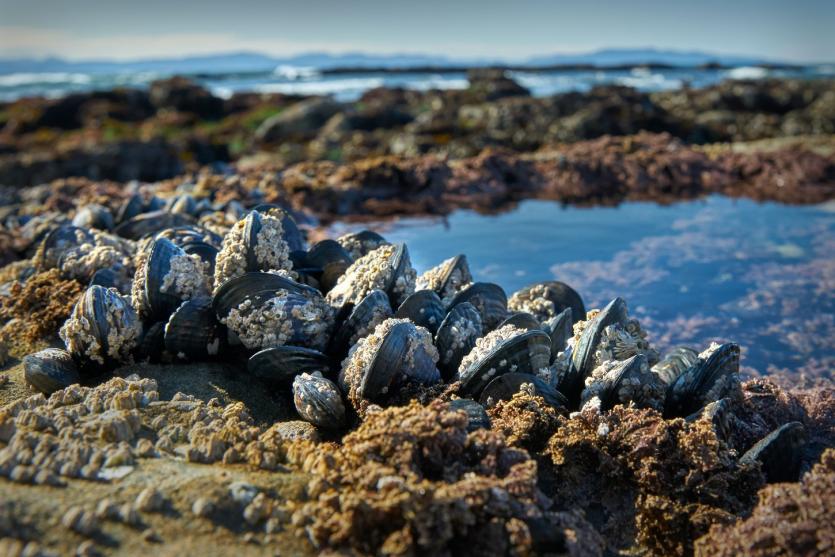Clusters of mussels on the beach at Botanical Beach near Port Renfrew, British Columbia. Photo:Getty
By Patryk Krych | The World Daily | JULY 9th 2021
According to experts, it’s highly probably that at least a billion marine animals may well have died during last week’s ‘heat dome’ that had formed along Canada’s Pacific coast in the record-breaking heatwaves that caused a country-wide panic.
The heat dome, which lasted at least five days and had broken heatwaves records all across Western Canada and the North-West of the United States, marked one of the most major climate events in recent times. Amidst severe droughts all across the US, and many more deaths thought to be related, it’s now thought that the heat dome had also led to the deaths of nearly a billion marine animals.
“The shore doesn’t usually crunch when you walk on it. But there were so many empty mussel shells lying everywhere that you just couldn’t avoid stepping on dead animals while walking around,” said a marine biologist at the University of British Columbia, Christopher Harley, who had made the calculations that at least a billion animals may have perished during the intense heatwave.
Harley mentioned having been struck by the intense smell of rotten mussels along a Vancouver-area beach, and how many of the species lying dead on the shore had practically been cooked. He stated that “It was an overpowering, visceral experience.”
He added: “It was so hot when I was out with a student that we collected data for a little bit and then retreated to the shade and ate frozen grapes. But of course, the mussels, sea stars and clams don’t have that option.”
Though the temperatures in the air around Vancouver had been noted to be around the high 30s degrees Celsius, Harley and the student had found that the temperatures along the rocky shores had actually risen to around 50 degrees Celsius, with the help of an infrared camera.
Whilst barnacles are fairly strong shellfish, and can usually tolerate higher temperature, particularly around the mid-40s, the temperatures on the shore were too rough even for them. This is doubly true for the mussels, which can usually only withstand temperatures around the high 30s.
“But when the temperatures get above that, those are just unsurvivable conditions,” Harley further added.
Harley said that he had also heard reports of dead sea anemones, rock fish and oysters – all as a result of the intense heatwave. The recovery of many of these species may take a long time, due to how long it takes for many of them to breed. In the meantime, experts are warning that the region is just going to have to adapt to more frequent heatwaves along the years to come.






